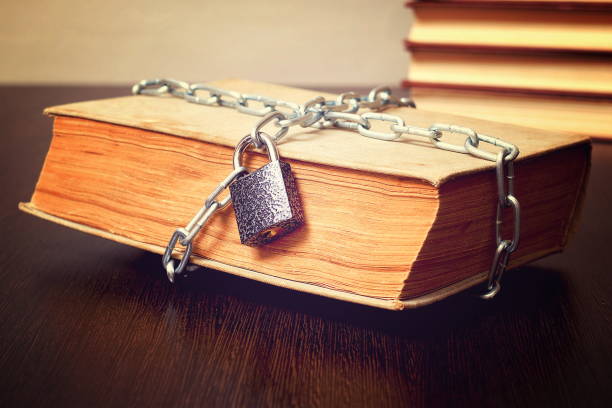
Literature’s engagement with the controversial is a long-standing affair, with banned books emerging as emblems in the battle between cutting-edge ideas and entrenched traditions. Works like ‘Lady Chatterley’s Lover’ have not just stirred moral debates; they have propelled legal reform forward, marking the path of the 1960s sexual awakening. Meanwhile, ‘Brave New World’ stands as a testament to how deeply societal norms cut, raising questions that led to its own suppression. These infamous narratives, far from mere entertainment, embody the struggle for free thought.
The eloquence and audacity of these literary works render them not just banned but influential, showcasing literature’s might in challenging authority. Henry Miller’s ‘Tropic of Cancer’ thrusts sexual discourse into the spotlight, challenging the conventions of its time through its explicitness. And Salman Rushdie’s ‘The Satanic Verses’ stirred controversies that transcended national borders, starkly highlighting the conflict between religious sensitivity and creative freedom. As items prohibited, they underscore crucial epochs where the substance of unfiltered censorship rebukes seeps into the very fabric of our society.
Understanding Censorship of Books and Its Impact on Society
The discourse on book censorship delves deep into multifaceted territory. It refrains not just from the mere removal of texts but also influences the accessibility of information, cultural evolution, and sociopolitical paradigms. Institutions engaged include literature censorship boards, public libraries, and active community participation. Their combined efforts contribute to a varied, intricate conversation on the subject.
The Role of Literature Censorship Boards
Entities tasked with overseeing literary content have a significant impact on what the public can access. Their aim is to maintain community standards, often leading to debates on the curbing of creative freedom. In jurisdictions such as Ireland and Australia, books have been withdrawn from circulation due to their defiance of accepted societal norms. This illustrates the substantial influence these boards possess in steering cultural debates.
Banned Books and the Public Libraries Controversy
Public libraries stand at the forefront of the censorship issue, serving as the quintessential arenas for literary access debates. Recent data from the American Library Association Office for Intellectual Freedom has pointed to a notable increase in attempts to restrict literature access. These challenges range from books addressing racial disparities to those exploring LGBTQ themes. Emerging from these debates is the pressing need for libraries to balance diverse viewpoints with local sensitivities, a complex task indeed.
Community Responses to Challenged Books
When books face censorship challenges, communities’ reactions are varied, reflecting a tapestry of opinions. From standing against such measures to advocating fiercely for creative liberty, these responses vary. For instance, Banned Books Week provides a platform where citizens come together to interrogate and push back against censorship’s ideological and practical repercussions. Such initiatives highlight the pivotal role communities assume in protecting intellectual freedoms and countering the adverse impacts of censorship on cultural and societal advancement.
The interaction between censorship authorities, guardians of public literature, and the populace showcases a nuanced narrative. It reveals a landscape where discussion, conflict, and proactivity converge. The ongoing negotiations on literary content by these stakeholders are pivotal. They continue to determine the course of literary freedom and its impact on society and cultural enrichment.
The Historical Struggle for the Freedom to Read
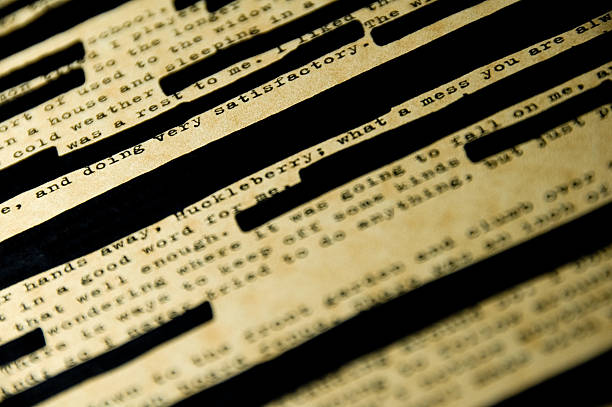
In an exploration of the protracted fight against censorship, we encounter enduring obstacles that imperil the freedom to engage with written works. This quest reflects a historical campaign for uninhibited literary expression, deeply entrenched within society’s recurrent efforts to limit the dissemination of ideas and information via prohibitive tactics such as book bans.
Censorship Attempts Through the Ages
The chronicles of human history are rife with endeavors to subdue oral and scriptural discourse, from the Nazi regime’s draconian book burnings designed to obliterate rivaling viewpoints to modern-day contentions over educational and public library literature.
The American Library Association (ALA) illuminates that ongoing disputes concerning literary works’ thematic richness and content invariably underscore the persistent dichotomy apparent within societies that ostensibly champion the principle of reading freedom while navigating perennial censorship entanglements.
Significant Court Cases Influencing Banned Books
Throughout history, pivotal legal confrontations have significantly shaped the course of book banning, fostering a dialectic of discourse constraints versus readership liberation. Undeniably, the 1982 ruling in Island Trees School District v. Pico stands as a lighthouse moment, prohibiting arbitrary book removals from school libraries on grounds of content alone.
This seminal judgement, among a compendium of others, underscoring the indispensable role of the judiciary in defining the contours of our literary landscape, epitomizing an enduring historical effort to mitigate the encroachments of censorship.
The Notorious Case of ‘Lady Chatterley’s Lover’

In 1960, ‘Lady Chatterley’s Lover’ by D.H. Lawrence thrust itself to the linguistic battlefield, pivotal in one of history’s most weighty legal contests. The novel, overt in its thematic exploration of a lady’s liaison with a gamekeeper, engendered a titanic debate. Its publication served as the impetus for a seminal obscenity case against Penguin Books. This struggle against traditional values and its repercussions were emblematic of the sexual paradigm shift in the 1960s.
Legal Battles Over Explicit Content
Penguin Books’ trial transcended simple courtroom drama, embodying a struggle between societal constraints and creative liberty. In the wake of the 1959 Obscene Publications Act, Penguin elected to release the unaltered version, invoking its literary merit to shield it from censure. The ensuing legal clash, pitting puritanical forces against progressive minds, featured luminaries like E.M. Forster, championing its artistic value. This legal duel cast a glaring light on the need for, and resistance to, censorship reform, likely forever altering the delineation of obscenity.
Societal Changes Post-Publication
After Penguin Books’ exoneration, ‘Lady Chatterley’s Lover’ experienced unprecedented commercial success, selling beyond 3 million copies in a brief span. This luminous response indicated an epochal transformation in attitudes towards sexuality and literary freedom. The populace’s enthusiastic embrace of Lawrence’s narrative ushered in a cultural epoch characterised by a newfound candour and tolerance for risqué subject matter. The ruling in this instance not only laid the groundwork for a greater acceptance of sexual themes in literature but also constituted a cornerstone in the broader sexual reformation of the era.
| Year | Event | Impact |
|---|---|---|
| 1960 | Publication and trial of ‘Lady Chatterley’s Lover’ | It incited legal duels regarding explicit content and played a critical role in the sexual revolution. |
| 1960 | Sales post-acquittal | Witnessed over 3 million copies sold, marking a pivotal societal shift in attitudes. |
| 1959 | Introduction of Obscene Publications Act |
The Controversial Themes in ‘Brave New World’
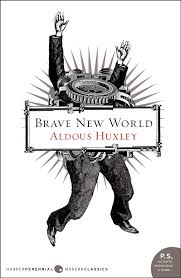
Aldous Huxay’s seminal work, Brave New World, has incited global controversy and debate since publication. It challenges readers to question the ethics of a utopian vision. In this future, individuals passively maintain an imposed social order. Themes critique religion and family structures, warning against rampant control by science and government alike.
Banned for Challenging Religion and Family Structures
In a scathing critique, Brave New World envisions a society that prizes technological advancement over traditional religions. Additionally, it dismantles the concept of the traditional family in favour of manipulated populations. These themes incited bans in Ireland and Australia due to their perceived attacks on sacred beliefs.
Aldous Huxley’s extrapolations echo alarming societal trends today. The novel frightens and challenges readers with its depiction of drug use, widespread promiscuity, and its critical stance on authorities. Its presence in educational curriculums highlights the discomfort it causes by questioning fundamental societal and personal beliefs.
Despite its divisive nature, the impact of Brave New World is indubitable. Nominations for the Nobel Prize attest to its literary merit. It remains key in discussions on science, religion, and ethics, with positions on the Modern Library lists and recurrent challenges emphasizing its exploratory role in the implications of societal control.
The sustained interest in Brave New World profoundly prompts reflections on the ethical use of technology. This book continues to be a focal point in discussions about governance and individual agency.
‘Tropic of Cancer’: Decades of Legal Action
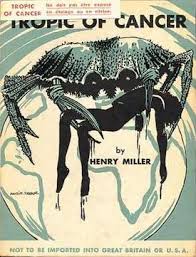
Henry Miller’s Tropic of Cancer, a work significant for its defiance of literary norms, faced a string of legal challenges stemming from its overtly sexual content. Emerging in 1934 within the permissive cultural fabric of Paris, the year of its birth, the United States blocked its import, marking an onset of protracted legal disputes. Grove Press’s 1961 release within the US, aligning with shifting societal attitudes, initiated definitive legal confrontations.
The narrative weaves Miller’s realities as a Parisian itinerant writer with an array of compelling characters. Among them, Boris, Mona, and Tania feature prominently, reflecting its deep exploration into human sexuality. While critics lambasted the work as repugnant, it was praised for its candid approach, offering poignant reflections on liberty and the condition of existence.
The legal barriers for Tropic of Cancer intensified with the US Customs’ ban, precipitating a lengthy series of challenges against literary repression. Across 21 states, the book faced over 60 obscenity lawsuits, setting new benchmarks in the battle against censorship. Its legal vindication in the 1964 Grove Press, Inc. v. Gerstein case by the US Supreme Court underscored its cultural and legal significance, cementing its place in American literature.
- In 1961, its publication led to obscenity lawsuits filed by numerous booksellers in multiple states.
- On July 10, 1963, the New York State Court of Appeals declared the book obscene under state law, which was overturned by the Supreme Court’s decision in June 1964.
- It took until 1986 for the last ban on the book to be imposed, which occurred in Turkey, highlighting the global reach of its controversy.
The book’s extensive legal journey not only expanded the confines of American obscenity statutes but also secured a critical legal benchmark for the literary depiction of sexuality. Today, Tropic of Cancer serves as an emblem of unrestricted creative liberty, universally available across diverse platforms and languages. Its transformation from contested to essential reflects its indelible impact on both legal paradigms and modern literary expression.
Exploring the Global Impact of ‘The Satanic Verses’
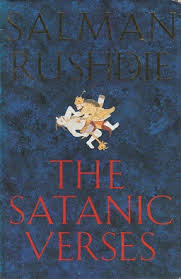
In 1988, the release of The Satanic Verses by Salman Rushdie lit a fuse of controversy that endures today. It sparked debates on freedom of expression and religious tolerance. The Islamic community strongly opposed it, deeming the novel blasphemous.
The Fatwa Against Salman Rushdie
In the annals of modern literature, the fatwa on Salman Rushdie stands out as a critical event. Ayatollah Khomeini’s decree on February 14, 1989, not only threatened Rushdie but also drew a complex international response.
It forced governments to ponder the delicate balance between free speech and religious respect. Rushdie sought refuge in hiding under British protection for nearly ten years. The episode underscored the jeopardy authors face when their work offends.
International Reaction to Alleged Blasphemy
The backlash against The Satanic Verses was significant and widespread. Cities worldwide saw large protests, with book burnings and effigy destruction. The work prompted a global dialogue on artistic freedom and blasphemy limits.
The Rushdie Affair’s global impact transcends its initial uproar. It spotlighted the ongoing struggle between secular rights and religious norms. The Satanic Verses thus endures as a symbol of the fight for literary autonomy and as a topic of scholarly and political review.
The lasting impact of Rushdie’s work is evident in contemporary debates on censorship and freedom of speech. These discussions are vital for understanding cultural interactions and protecting individual expression. They navigate the complex interplay between artistic and cultural sensitivities.
This episode signals the imperative of continuous dialogue. It upholds the role of literature as a cornerstone for discussion and comprehension in our diverse and intertwined world.
Prohibition of ‘Lolita’ for its Sensitive Subject Matter
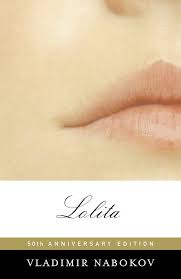
‘Lolita,’ authored by Vladimir Nabokov, initiated a tumultuous dialogue within the literary domain. Its narrative delved into the intricate psyche of Humbert Humbert, manifesting questionable affections towards Dolores Haze, a young girl. This exploration, while deemed of significant literary value, engendered widespread displeasure and controversy, leading to its censorship in numerous nations, including France, Britain, and Argentina in the 1950s.
In the United States, its eventual publication marked a consequential victory over adversity. Even so, the road to publication was fraught with arduous negotiations, signifying an era distinguished by stringent moral oversight. Such periods were characterized by the skepticism surrounding literary works that veered from the established moral compass, reminiscing of the critical surveillance imposed upon them.
Post-publication, ‘Lolita’ evoked a divergent array of sentiments among its readers and critiques, exemplifying a rich tapestry of opinions and responses. While some displayed empathy towards Humbert, others surfaced an innate wariness and repulsion, perhaps paralleled with voyeuristic tendencies. This spectrum of reactions underlines the literary achievement of Nabokov, securing an unparalleled connection with its readers through its evocative narrative.
“Lolita, light of my life, fire of my loins. My sin, my soul.” – Vladimir Nabokov, Lolita
The title ‘lolita’ has undergone transformation, seeping into main cultural discourse as a metaphor for early sexual allure in girls. Such evolution has further intensified the dialogue on the casualization of these terms, and their potential influence on the societal perception of female minors.
| Country | Year of Ban | Reason for Ban |
|---|---|---|
| France | 1956 | Obscenity |
| Britain | 1955 | Sexual content and sensitive themes |
| Argentina | 1959 | Immoral content |
In the debate surrounding ‘Lolita,’ the starkly polemical reception not only celebrates Nabokov’s ingenuity as a narrative craftsman but also accentuates societal apprehension and discomfiture spurred by literature confronting taboos. It accentuates the fundamental inquiry into the boundary delineations of book censorship. Further, it prompts a reflection on the dual mandate of such actions in either augmenting or impeding the elevation of cultural and societal discourses.
The Worldwide Censorship of ‘Ulysses’
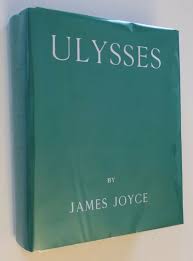
James Joyce’s ‘Ulysses’ is a seminal work in modern literature. It embarked on a tumultuous journey, facing global censorship. This journey ignited controversies that significantly influenced the legal landscape of literary freedoms. The novel gained infamy for its profound content and complex narrative style. It encountered severe opposition in the US and UK, primarily due to explicit sections in the “Nausicaa” chapter, published in 1920. This depiction within ‘Ulysses’ spurred significant legal and societal challenges.
Burning of Books by the US Postal Service
During its troubled reception, ‘Ulysses’ faced severe suppressive actions from the US Postal Service. This period witnessed a dark chapter of book burning, symbolizing efforts to curtail objectionable material. The US Postal Service acted as a censor, confiscating and burning many copies of ‘Ulysses’. This event marked a concerted nationwide effort to suppress what was deemed obscene literature. The censorship was a part of a broader pushback against avant-garde artistic and literary movements that questioned the societal status quo.
The narrative surrounding ‘Ulysses’ changed significantly in 1934, thanks to a seminal decision by Judge John M. Woolsey. This decision lifted the book’s ban, recognising its literary value and dismissing claims of obscenity. Woolsey’s judgement praised Joyce’s groundbreaking narrative style and use of language. While acknowledging its occasional crudeness, he highlighted its role in crafting a realistic depiction of characters.
Woolsey’s ruling was a groundbreaking victory for ‘Ulysses’, setting an important precedent in the evaluation of literary works. It influenced future legal disputes regarding censorship. This decision wasn’t just pivotal for Joyce’s work; it was crucial in the broader fight for literary freedom. It highlighted the significance of continued support from the literary community and organisations dedicated to protecting artistic expression.
Today, the story of ‘Ulysses’ remains relevant, highlighting the ongoing struggle for artistic freedom against forces of suppression. It serves as a timeless example of literature’s capacity to push the limits of expression. At the same time, it underscores the intricate balance between interpreting artistic works within the frameworks of law and societal morals.
Reflecting on ‘All Quiet on the Western Front’ Being Branded Unpatriotic
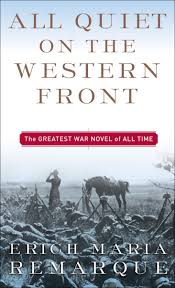
In his seminal work, All Quiet on the Western Front, Erich Maria Remarque meticulously crafts a narrative that pierces through the complexities of war. He plunges his readers into the harrowing experiences of soldiers during the Great War, revealing the degradation of morality and the brutal inhumanity that war compels.
The novel serves as a poignant reminder, shedding light on the tragically traumatic effects of war on the human psyche. Remarque eloquently navigates through themes of camaraderie, loss, and disillusionment, painting a vivid picture of the stark reality faced by those on the front lines.
Displayed with poetic verve and haunting precision, the narrative explores the daunting struggle to maintain individual identity in a war-torn world. The sheer weight of collective suffering and the erosion of personal freedoms come into stark relief through his prose.
Critically acclaimed across the globe, All Quiet on the Western Front portrays war not as an abstract concept but as a deeply personal and transformative experience. It engages the reader on a visceral level, imploring us to not only learn from history but to understand the human cost of war.
The Journey of ‘Animal Farm’ Through Bans and Prohibitions
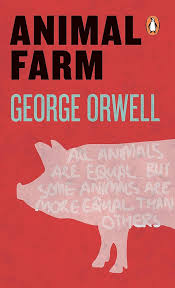
George Orwell’s Animal Farm, often revered for its critical examination of communism, delves into the deceptive and manipulative nature of autocratic rule. Despite earning critical acclaim and becoming embedded in political dialogues, Animal Farm has been the target of bans and prohibitions, mirroring the despotic tendencies it critiques. This phenomenon spans various nations. It showcases how literature, even when critically acclaimed, can be suppressed for its dissenting voice.
The year of its initial launch, 1945, marked the beginning of its prohibitions in communist strongholds like the USSR, Cuba, and North Korea. These regions swiftly recognised the novel as a threat and enforced bans within their territories. Beyond political suppression, the United Arab Emirates acted against it, citing concerns over cultural respect. This exclusion was due to the novel’s depiction of animals, particularly pigs, which conflicted with local religious sensitivities.
The persistent hurdles faced by Animal Farm highlight a consistent theme within significant literary works. They underline the potency of literature in challenging societal norms and political systems. Orwell effectively stages a dialogue through allegory, focused on the corrupting nature of authority. Thus, Animal Frarm’s journey becomes emblematic of literature’s role as a vanguard of social and political critique.
| Event | Date | Achievement |
|---|---|---|
| Publication | 17 Aug 1945 | First publication in England |
| Page Count | – | 92 pages |
| Awards | 1946 & 1996 | Hugo Award for Best Short Novel, Retrospective Hugo Award |
| Inclusion in Lists | 20th Century & Beyond | Time’s 100 Best English-language Novels, Modern Library’s Best Novels, Great Books of the Western World |
The journey of Animal Farm is a tale of perseverance against all odds. Initially rejected, it forged a path to the modern canon as a poignant critique of communism. Despite facing bans and prohibitions, its legacy as a voice of truth in a world prone to autocracy is bolstered.
The impact of Orwell’s masterpiece transcends storytelling. It is a provocative call-to-action, encouraging a critical examination of power structures. Through its journey, Animal Farm stands as a warning against unbridled authority. It echoes the universal principle that all beings are equal, with a sombre annotation that some inevitably find themselves more equal than their counterparts.
Teenage Turmoil in ‘The Catcher in the Rye’
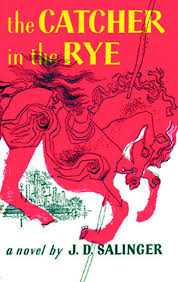
JD Salinger’s The Catcher in the Rye stands as a vanguard in a perennial conflict, vying between its profound impact and its consistent challenge within the academic sphere of the United States. The novel delves into the unrest and revolt that define adolescence, probing at its core the often uneasy coexistence between personal turmoil and the expectations set by societal and educational structures.
The Most Banned and Most Taught Paradox
In the annals of American literature, The Catcher in the Rye holds a unique position, being both widely banned and highly required reading in schools. This dual status underscores the sharp divergences in opinion over the moral and ethical content presented by JD Salinger, straddling the line between acceptability and rebuttal. Its content has been subjected to extensive criticism, primarily due to the depiction of moral decay, insubordination among the youth, and the use of language and conduct, deemed unsuitable for educational consumption.
The embodiment of Holden Caulfield’s narrative reflects a candid exploration of teenage psyche, drawing both admiration and criticism. While some hail it as an essential literary exploration of genuine issues encountered by teenagers, others denounce its impact, attributing it to the pervasive incorporation of crude language, themes of nihilism and cynicism, and sexually explicit material.
The noise surrounding calls for prohibition largely emanates from guardians and educational bodies, citing the book’s detrimental effects on youth due to its inclusion of explicit language and themes. In opposition, such movements have arguably precipitated an increase in the novel’s appeal to its primary audience. This complex interaction highlights the essence of rebellion portrayed by Salinger and the nuances inherent in censorship discussions.
The magnetic pull of a forbidden piece, opposed by its endorsement within educational systems, reflects a dilemma at the core of literary censorship. This juxtaposition stimulates ongoing discourse regarding the influence and relevance of literary bodies, such as The Catcher in the Rye, in challenging and shaping cultural norms.
Focusing on the controversial yet enduring legacy of Salinger’s opus, sales data attests to the perennial interest in The Catcher in the Rye. Despite its turbulent reception, the novel continues to captivate a significant readership, emphasising its persistent relevance in the exploration of the intricate journey through adolescence, marked by trials and transformation.
The Cultural and Social Unrest in ‘The Grapes of Wrath’
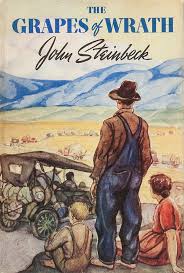
John Steinbeck’s The Grapes of Wrath delves into the precarious existence of Depression-era migrant families, particularly in California. Steinbeck’s work, published in 1939, quickly climbed bestseller lists. Ranking just behind Gone With the Wind, it deeply resonated with readers, offering an unflinching look at the challenges of the period.
The novel’s plot navigates through the hardships of families in their pursuit of survival amidst economic downturns and displacement. Kern County serves as a critical setting, symbolising social unrest prevalent across the state. Officials’ censorship efforts following its publication, banning and burning copies, underscore both the novel’s powerful critique of exploitation and the tension between the consuming classes and those struggling to survive.
Furthermore, the narrative introduced the public to the hardships endured by migrant workers from the Dust Bowl. This depiction not only shed light on the human cost of economic hardship but also sparked conversations on systemic issues, challenging readers to reflect on the society of his time.
- California’s period marked by a scarcity of jobs saw an influx of migrants during the harvest, contributing to the emergence of shantytowns.
- In response to the dire economic state, the Farm Security Administration obtained an augmented budget from Congress during 1939-40. This sought to address the pressing need for socioeconomic interventions, signalling the government’s awareness of the crisis’s severity.
Steinbeck’s impact transcended the realm of literature, spurring artists like Woody Guthrie to further amplify the novel’s messages through Dust Bowl Ballads. Guthrie’s album harmonised with The Grapes of Wrath‘s account of resilience amidst adversity and provided a unique, musical dimension to the era’s socio-economic struggles.
“The Grapes of Wrath is perhaps the most eloquently articulated account of displacement and desperation experienced during the Great Depression, encapsulating both the human and systemic failings of that era.” – An excerpt from a featured essay in the comprehensive collection examining Steinbeck’s work.
Moreover, The Grapes of Wrath stands as a testament to John Steinback’s literary prowess and the critical thought it evoked. It encompasses a chronology of Steinbeck’s life and an array of critical essays, offering a breadth of perspectives. The book’s versatility in academia and general discourse is further enriched by bibliographies and scholarly contributions, solidifying its place in global literary dialogues.
Gender Identity and Sexual Orientation in ‘The Well of Loneliness’
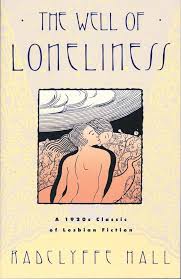
In 1928, Radclyffe Hall’s ‘The Well of Loneliness’ emerged, tackling gender and sexual orientation with profound depth. Through the lens of its protagonist, Stephen Gordon, the novel spotlighted lesbianism with unprecedented openness. It, however, faced robust censorship and a ban. Despite this, the outcry, both critical and supportive, marked a pivotal moment in literary and public responses to the theme.
Stephen Gordon, ironically named by her parents’ wish for a boy, was portrayed with bold masculine traits and a love for women, breaking new ground in literature. Her struggles reflect both personal and societal challenges concerning sexual orientation. The response to the novel was divisive, illuminating early signs of support for LGBTQ+ rights.
The novel received critique for its use of ‘congenital inversion’, a phrase Hall coined, sparking discourse on early transgender themes. It set the stage for discussions on gender outside the binary, which remain relevant. Furthermore, it stirred controversy and drew authenticity from Hall’s personal experiences and identity.
Radclyffe Hall’s work navigated through stringent obscenity laws, challenging societal norms despite lesbianism’s legality in Britain. The novel’s ban highlighted the era’s reluctance to openly address issues of sexual orientation. This marked a crucial moment in LGBTQ+ literary history.
The novel significantly influenced public opinion, with Hall at the helm of change. It catalysed a historical shift towards embracing diverse gender and sexual identities in both literature and society. The novel’s journey reflects the profound impact of Hall’s narrative on LGBTQ+ rights and discourse.
| Event | Year | Impact |
|---|---|---|
| Publication of ‘The Well of Loneliness’ | 1928 | The novel is released and sparks immediate controversy. |
| Legal Challenges in the UK | 1928 | Banned due to its depiction of lesbian relationships. |
| Public Support and Outcry | Post-1928 | Thousands of readers rally in support of Radclyffe Hall. |
| Republication | 1949 | The novel re-released in the UK reflecting changing attitudes. |
Hall’s fearless exploration of gender and sexuality in ‘The Well of Loneliness’ is a watershed in LGBTQ+ literature. It highlights the intrinsic link between societal values and the depiction of these themes in literature. Her pioneering work laid the foundation for the acceptance and discourse of the LGBTQ+ community.
A Deep Dive into Banned Books Aimed at Young Adults
The relationship between young adult literature and the eternal debate on censorship remains a critical point of contention. Numerous works targeting this audience have faced severe restrictions throughout history. Still, the arrival of graphic novels, predominantly exemplified by the likes of Gender Queer, has punctuated this discourse, shedding light on intricate gender-related themes. These contributions, however, have not been without controversy and polarised responses within various sectors of society.
The Graphic Novel ‘Gender Queer’ and Its Controversy
Gender Queer: A Memoir authored by Maia Kobabe is a poignant testament to the widening spectrum of dialogues on young adult issues through graphic novels. It serves as a quintessential example of works facing severe pushback. The novel, lauded for its detailed approach to gender identity, generated significant discord and led to its prohibition in numerous locales. While intended to foster understanding and compassion towards varying gender expressions, its reception underscores significant societal tension in navigating LGBTQ+ themes within adolescent literature.
Young Adult Literature Facing Book Bans
Youth literature’s scrutiny often lies in its daring exploration of sex, race, and social activism. Noteworthy titles including This One Summer and The Walking Dead series have attracted a flurry of censorship actions due to their exploratory nature. These controversies, driven by a complex interplay of cultural, political, and parental prerogatives, accentuate the persistent conundrums over suitable content for adolescent consumption. Notably excluded from these deliberations are the youth themselves, the principal consumers of these literary endeavours.
The discourse surrounding proscribed young adult literature significantly influences the availability of diverse storytelling. Moreover, it moulds the paradigm of literary jurisdiction. Reports from authoritative entities like PEN America and the American Library Association suggest heightened challenges against these publications. Hence, the uproar concerning banned literature transcends mere safeguarding interests. It delves into the intricacies of narrative ownership and theme accessibility within the purview of public and educational libraries.
‘American Psycho’: Graphic Violence and the Push for Censorship
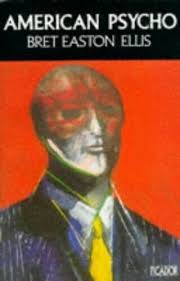
Bret Easton Ellis’s novel, ‘American Psycho’, stands at the nexus of debate on graphic violence within literary works and the subsequent crusade for censorship. Renowned for its stark portrayal of heinous acts and a trenchant critique of 1980s consumer ethos, the novel has incited fierce criticism across nations. Notably, in Australia, reactions have been heightened by the country’s own history of violence, fostering stringent legal restrictions.
‘American Psycho’ is entirely prohibited from sale in Queensland, a directive that underpins the region’s uncompromising stance against potentially injurious material. This decisive action is emblematic of a national wariness towards depictions of extreme violence. Such sensitivity can be partially attributed to the shock waves caused by tragic events, such as the Strathfield and Port Arthur massacres, the latter perpetrated by Martin Bryant. Bryant’s actions led the media to dub him as the echoing specter, “Australian Psycho”.
The narrative’s central figure, Patrick Bateman, committing atrocious acts, has triggered intense dialogue regarding the influence of such narratives on societal ethics and behavior. Organizations like the National Organization for Women and multiple community groups have called for age restrictions on the grounds of the novel’s graphic content, sparking widespread protests and boycotts. These actions highlight the divisive nature of the novel.
Australia’s decision to deem ‘American Psycho’ a ‘Category 1 Restricted’ publication, requiring sealed sales to individuals above 18, aligns with an international drive to restrict access to potentially detrimental material. Such a designation does not only emphasize the perpetual controversy enveloping the novel. It also evokes broader questions concerning the boundaries of creative freedom amidst efforts to safeguard social integrity.
| Aspect | Impact |
|---|---|
| Graphic Violence | Led to ban in Queensland and restricted sales elsewhere in Australia. |
| Globally Polarized Reception | Triggered protests and boycotts, reflecting varying global perceptions of moral and artistic values. |
| Censorship and Freedom | Sparked debate over the balance between protecting community values and upholding freedom of expression. |
| Influence on Policy | Influenced legislative actions and policies regarding the sale and distribution of controversial literature in Australia. |
The ongoing discourse surrounding ‘American Psycho’ is pivotal in scrutinizing the boundaries of artistic convection and the mandates faced by authors and regulatory entities. Despite the fierce critique directed at Bret Easton Ellis’s opus, it remains an essential piece for confronting the more obscure aspects of humanity and consumerism.
Conclusion
In the realm of literary expression, the evolution of banned books delineates a multifaceted narrative defined by contentious cultural confrontations and the ongoing discourse of censorship. These literary works serve as conduits for profound societal critique, sparking conversations on topics that challenge the status quo. This contentious bond between written works and societal conventions is integrally linked to the profound cultural impacts these books impart.
The recent examination of ’13 Reasons Why’ as a polemic piece, characterized by the American Library Association, brings to light the intricacies surrounding the censorship dialogue. Carnegie Mellon University’s findings, correlating the show’s release with an increase in teen suicides, underline the broader, consequential nature of the book ban debate. Author Jay Asher’s musing on the discomfiture that invokes bans highlights the societal reluctance to engage with vexing discussions.
With notable figures such as President Biden and former President Barack Obama voicing their disapprovals against literary censorship, the imperative to safeguard First Amendment rights and counteract the upsurge in bans grows more urgent. This resistance movement is reinforced by initiatives like the American Library Association’s Unite Against Book Bans, signifying a widespread opposition to restrictions. The implication of this struggle surpasses mere literary access; it resonates deeply with the pivotal aspects of literacy and civic education. Our persistent endeavours to chronicle and safeguard the history of literature underscore our staunch support for freedom of thought and expression.







